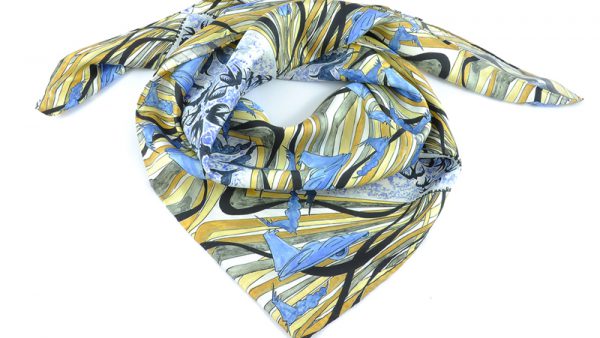
‘The Big Five, Presenting The European National Motor Museums’ is to be the lead theme of InterClassics Brussels.
Maastricht, 12 October 2017 – ‘The Big Five, Presenting The European National Motor Museums’ is to be the lead theme of InterClassics Brussels.The five leading motor museums of Europe will come together at the third edition of InterClassics Brussels. The five museum directors recently met at the National Motor Museum in Beaulieu (UK) to prepare for their joint participation in InterClassics Brussels.Never previously displayed and therefore a unique opportunity to see unique exhibits from five countries under one roof at InterClassics Brussels from 17 to 19 November 2017 at Brussels Expo.
Each museum will present three of its best cars during InterClassics Brussels; one pre-war classic car originating from that country, one car that typifies the museum and one race car. Beaming with pride, the men each announced the masterpieces they would be displaying at InterClassics Brussels in the collective pavilion, ‘The Big 5’, to be set up in Hall 1 from 17 through 19 November 2017 at the Brussels Expo.
Bentley 4½ Litre Supercharged 1930
National Motor Museum, Beaulieu – United Kingdom
W.O. Bentley built his first sports car, a 3-litre, in 1919. The successor to this early model was the 4½ litre which was developed to become the famous supercharged, or Blower, model. Bentley himself disapproved of supercharging and the blown cars were largely developed by Bentley racing driver Sir Henry Birkin. The supercharged version did not have a particularly successful competition record, although un-blown Bentleys did win the Le Mans 24 Hour Race in 1924, 1927, 1928 and 1929. In spite of this, it did make a fine road car. The supercharger used on Bentley was designed by engineer Amherst Villiers who was a close personal friend of author Ian Fleming. Perhaps this is why in Fleming’s original novels Casino Royale, Live and Let Die and Moonraker, James Bond drove a battleship-grey 4½ litre Bentley Blower.
Talbot Lago (T150 SS ‘Teardrop’ coupe Figoni & Falaschi) 1937
Louwman Museum, The Hague – The Netherlands
‘Goutte d’eau’ was the name of this exceptionally beautiful body, or ‘drop of water’. In English, it was named ‘the teardrop’. It was a creation credited to the Parisian coach builders Figoni & Falaschi, known at the time for their flamboyant yet always stylish coach designs. Their work stood in stark contrast to what was usually on offer. Their techniques were also innovative; they used the Nitrolac metallic paints that were new at the time. Behind its beautiful exterior hides the fact that this car was a pure racer with a four-litre six-cylinder 160 hp engine under the bonnet. One of these ‘teardrops’ rode to third place at the 1938 Le Mans, losing to two Delahayes. This particular car was the property of Mrs Robin Byng, Countess of Strafford, who used the car in pre-war France. After the war, the Talbot-Lago was sold to gentleman racer Rob Walker who used it as a practice car for the 1949 Le Mans. Figoni & Falaschi was a partnership between two Italians who had emigrated to France; designer Joseph (Giuseppe) Figoni and businessman Ovidio Falaschi. They started their company in 1935, but their success was short-lived. After the war, the demand for special coachwork had dried up, and the monocoque body was on the rise. Ultimately, only 16 of their masterpieces, the ‘teardrop’, were manufactured. Each of these cars is so different because they are made to meet specific demands.
Bugatti, type 46, coach 1933
The Cité de l’Automobile/Schlumpf Collection, Mulhouse – France
This is the only so-called ‘surprofilée’ version of the Bugatti type 46 that was assembled at the workshops in Molsheim. The history of this model is a prime example of the often unusual life cycle of our precious cars. The body (designed by Jean Bugatti) was initially mounted onto a 46 S-chassis and was shown in this configuration at the Paris Motor Show in October 1932. In March of the following year, the body was mounted onto a new chassis (type 50 T). The ‘surprofilée’ body that you see here was discovered by the American collector E. Richardson in the courtyard of a farm in the Dordogne region in France. He had previously purchased a 46 chassis from the factory and decided to mount the body onto this. You can see the result here. In other words, there is only one ‘surprofilée’ body for the Bugatti 46 which would ultimately be combined with three subsequent chassis. Inv.MNA 0914: Eight-cylinder in-line engine at the front; 81 x 130 = 5359 cc; 140 hp at 3500 rpm; top speed of 140 km/h.
Cisitalia 202 SMM Spider Nuvolari 1947
Museo dell’Automobile, Turijn – Italy
Named after Tazio Nuvolari, Italy’s leading prewar racing driver, who drove it in the 1947 Mille Miglia, this “speeder” was given a very original style under the direction of Giovanni Savonuzzi, Cisitalia’s chief engineer from 1945 to 1948. It has an all- aluminium bodyshell and its streamlined fins are barely noticeable on the rear mudguards. The Museum’s exhibit is one of the ten or so that still remain out of the approximately 20 built from 1947 to 1948.
Minerva OO Vanden Plas, 1921
Autoworld Museum Brussels – Belgium
Featuring the Belgian Vanden Plas ‘Tulipe’ body, this beauty was the personal car of King Albert I. At the time, it was the most expensive model in the Minerva range. Production of the Minerva line was started up again after World War I. The first model was a 20 hp four-cylinder 3,570 cc, followed in 1920 by a six-cylinder with the same bore and stroke of 90 x 140, and this 30 hp was equipped with a 5,335 cc engine. The suspension on these cars consisted of semi-elliptic springs with dampers at the front, and reverse cantilever springs at the back, resulted in a very comfortable suspension thanks to their large stroke. The radiator had a slightly aerodynamic, rounded shape. Specifications: Six-cylinder sleeve-valve engine/5,335 cc/30 hp/four speeds.
Beaulieu will also display its Rolls-Royce 40/50 Silver Ghost, which is one of the most famous cars ever built and forms part of the collection at the National Motor Museum. It was built in 1909 as chassis number 939 and supplied to Colonel Ferguson of Boughty Ferry, Dundee. The Rolls-Royce underwent several transformations before being rediscovered and put on show by Edward, Lord Montagu at Beaulieu. Engine: 7,046cc, 6 cylinder, side valve, 48 bhp at 1,200 rpm.
The third Beaulieu star of the show will be the legendary Lotus 49 which marked its 50th year in 2017. The F1 car, which was built in 1967 with chassis number 3, was famously campaigned by Graham Hill and is one of the most iconic racers of its generation. Its 2993cc V8 engine is sure to impress show-goers.
Beaulieu Commercial Director Stephen Munn said: “We are proud to be one of the leading motor museums in Europe and to be part of this amazing display of some of the most iconic and legendary vehicles in the world. The opportunity to see the collection together is one not to be missed.”
In addition to the lead theme, there will also be a second theme of ‘Cycle Cars & Grand Sport, highlighting a forgotten motor history’. There will be around 20 cyclecars on display thanks to the cooperation with Amilcar-Cyclecar Club Netherlands and the Belgian and French clubs.
InterClassics Brussels will take place from Friday, 17 November to Sunday, 19 November 2017 in event halls 1, 3, 4 and 8 of Brussels Expo. The classic car show traditionally attracts many buyers and car lovers. Discounted entry tickets can be bought online for €12.00 (adults). The price at the box office is €15.00 (adults). Children up to 11 years go free.www.interclassics.be















